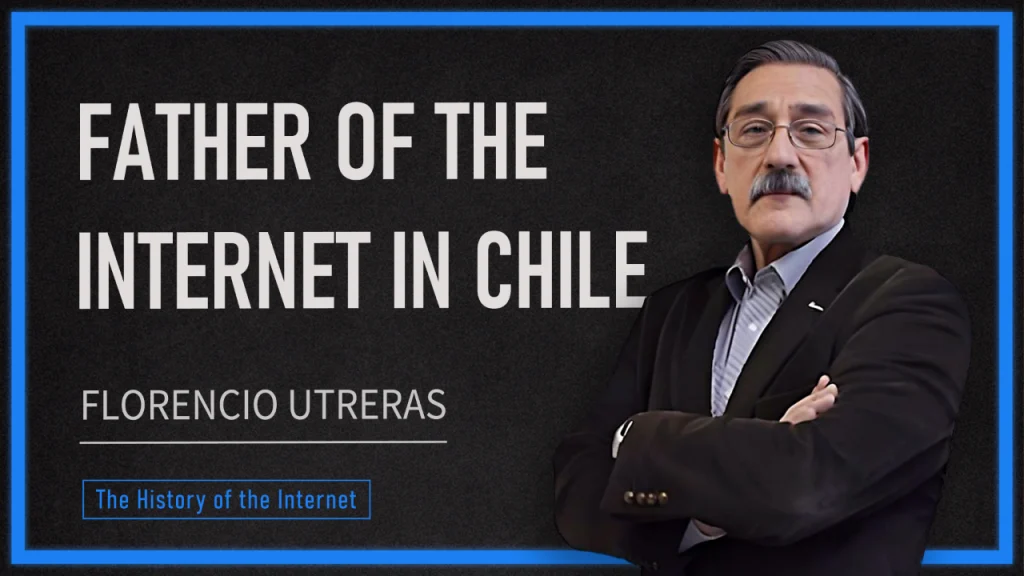- Florencio Utreras, dubbed the “father of the Internet in Chile”, led Chile’s BITNET connection and built REUNA for formal internet access.
- He headed Latin America’s RedCLARA to unify regional networks, ending reliance on U.S. infrastructure.
This interview is part of BTW Media’s new series, ‘The History of the Internet,’ which interviews the key engineers and computer scientists who helped build and create the Internet.
Florencio Utreras, widely called the “Father of Internet in Chile,” shares pivotal moments of building his country’s digital foundation in this interview. His journey began in the early 1980s, when he encountered his first “strange” email address (Grace@cs.wisc.edu) as a visiting professor in the U.S.—a novelty, since email was then only centralized at university data centers. Returning to Chile in 1985, he started exploring early email networks to connect local universities, years before the global internet took shape .
A defining breakthrough occurred in 1987, when Utreras led Chile’s connection to BITNET, an early academic network. Faced with sky-high costs for international satellite links, he negotiated access to NASA’s nighttime satellite connection (to the U.S.)—a creative fix that made the link possible. Later, he headed REUNA, Chile’s national academic network, which formally brought the internet to the country in 1992, spanning 4,000 kilometers to link universities from north to south.
Beyond Chile, Utreras shaped Latin America’s internet landscape. In 2003, he co-founded RedCLARA, a regional academic network that used submarine cables to unify nations and end reliance on U.S. infrastructure. Reflecting on his work, he admits he never imagined the internet would grow from an academic tool to a global utility. Today, his legacy endures, recognized by the Internet Hall of Fame for his pioneering innovations that connected continents.
Also read: The ‘father of the internet’: Interview with Vint Cerf
First Exposure to the Internet: A 1980s Academic Start
Florencio shares his initial involvement in the internet during the 1980s when he worked as a visiting professor at Texas A&M University. A colleague from Wisconsin sent him an email address – which he described as a “strange address” back then. He recounts seeking assistance from his university’s computer science department and computing services, only to discover that email was centralized at the university’s data processing center and not widely available. He also mentions returning to Chile in 1985 and joining a local group that aimed to connect universities through early email networks, laying the initial groundwork for Chile’s digital development.
Beating Cost Challenges: Using NASA’s Satellite Link for BITNET
Florencio identifies cost as the primary obstacle when leading Chile’s effort to connect to BITNET, noting that international satellite links – necessary to establish a connection with the University of Maryland in the U.S. – were prohibitively expensive. He details a critical solution: collaborating with NASA’s Center for Space Studies in Santiago, which had a permanent satellite link to the Goddard Space Flight Center near Washington, D.C. After months of political negotiations, NASA agreed to let them use the link exclusively at night to transfer emails. This workaround led to Chile’s first BITNET connection in 1987.
REUNA: Constructing Chile’s 4,000-Kilometer Academic Network Backbone
Florencio explains how REUNA transformed internet development in Chile. As one of Latin America’s earliest academic networks, REUNA originated in 1987 and was formally named by 1990. He details its rollout between 1992 and 1994: a 4,000-kilometer network connecting universities from Arica to Punta Arenas using microwave links. REUNA utilized Cisco routers to build Chile’s first IP network, enabling universities to develop their internal networks and access global academic resources.
RedCLARA: Latin America’s Internet Breakthrough Backed by the EU
Florencio highlights RedCLARA, the regional academic network, as the most significant turning point in Latin America’s early internet history. Founded in 2003 and operational by 2004, RedCLARA was funded by the European Commission. Before its establishment, Latin American countries relied on individual links to the U.S. with no intercontinental connectivity. Built using Global Crossing’s submarine cables, RedCLARA created a Latin American backbone connecting Brazil, Chile, Argentina, Mexico, and other nations. It allowed regional internet traffic to remain within Latin America and established direct connections to Europe, Africa, and beyond, uniting Latin American countries and giving them collective negotiating power with telecommunications providers.
Unexpected Growth: From 1980s Experiments to a Global Utility
Florencio admits he never anticipated the internet would evolve into a global utility. He reflects on the 1980s and 1990s: personal computers were rare (only used by corporations and universities; Chile saw PCs sold in major stores like Falabella in 1989), and accessing the internet required knowledge of complex codes. He credits two key developments for changing this: the invention of the World Wide Web by Tim Berners-Lee at CERN in 1989 and the rise of graphical interfaces, which made the internet accessible to non-technical users. He also notes that the later popularization of touchscreen cellphones eliminated remaining technical barriers, transforming the internet from a niche academic tool into a daily necessity.

